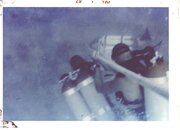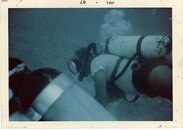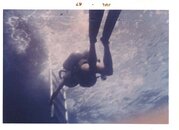- Messages
- 17,334
- Reaction score
- 13,743
- # of dives
- 100 - 199
When I got my OWD cert, I was taught to surface with at least 50 bar left in my tank. No matter whether I dived a 10L, a 12L or a 15L. I gotta admit, I stretched that "rule" a little bit. As long as I arrived at my safety stop with 50 bar left, I was good. Or at least, I thought so.
Now, 50 bar in a 10L tank is 500 surface liters, while 50 bar in a 15L tank is 750 surface liters. So that rule didn't make sense. Over in Imperial country, you're supposed to surface with 500 psi left in your tank. That's about 35 bar, and for an Al80 (11 liters water volume), it's about 350 surface liters.
A standard SPG has an accuracy of some 10-20 bar. So, if your SPG tells you that you have 50 bar left, worst case you might have only some 30 bar left. For a 10L tank, that's some 300 surface liters or about 10 minutes of gas. On the surface, so perhaps 50% less at safety stop depth. If your Imperial unit SPG has the same error, you might be down to almost zero minutes.
Is it safe to arrive at your safety stop with only 500 psi/35 bar left in your tank? Frankly, I don't think so. And I think you should start thinking about min gas calcs.
Now, 50 bar in a 10L tank is 500 surface liters, while 50 bar in a 15L tank is 750 surface liters. So that rule didn't make sense. Over in Imperial country, you're supposed to surface with 500 psi left in your tank. That's about 35 bar, and for an Al80 (11 liters water volume), it's about 350 surface liters.
A standard SPG has an accuracy of some 10-20 bar. So, if your SPG tells you that you have 50 bar left, worst case you might have only some 30 bar left. For a 10L tank, that's some 300 surface liters or about 10 minutes of gas. On the surface, so perhaps 50% less at safety stop depth. If your Imperial unit SPG has the same error, you might be down to almost zero minutes.
Is it safe to arrive at your safety stop with only 500 psi/35 bar left in your tank? Frankly, I don't think so. And I think you should start thinking about min gas calcs.







